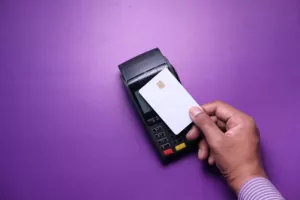
Understanding the Roles of Merchant Service Providers and Payment Gateways in E-commerce
Merchant Service Providers (MSPs) and Payment Gateways are two essential entities in the thriving realm of e-commerce that frequently function in the background to guarantee the seamless and secure processing of online transactions. Despite their tight collaboration, they have different roles and responsibilities. Let’s examine each one’s functions and differences.
Merchant Service Providers: The Financial Facilitators
A merchant service provider is comparable to having a financial guardian for firms. This particular kind of bank account is designed to assist businesses in accepting electronic payments, mostly from debit and credit cards. Once a customer makes a purchase, the MSP moves quickly to ensure that the money is transferred from the customer’s bank to the business account and to verify the payment details. Of course, they are the driving force behind the money, less their fees.
Key Functions of MSPs:
- Transaction Processing: MSPs deal with the actual transaction processing, collaborating with several credit card networks and banks.
- Fraud Prevention: They offer procedures and instruments for identifying and stopping fraudulent activity.
- Customer Support: MSPs provide assistance in resolving any potential transaction-related problems.
Payment Gateways: The Secure Transmitters
Consider a payment gateway as a link between the financial industry and your online store. It is a software solution that safely collects, encrypts, and transmits the client’s payment data to the MSP for handling. The payment gateway completes the transaction by sending the approval back to the store after the MSP grants the go-ahead.
Key Functions of Payment Gateways:
- Encryption: Payment gateways encrypt credit card information as it is being transmitted, protecting sensitive data.
- Authorization: They interact with MSPs to instantly approve transactions.
- Integration: Payment gateways facilitate a smooth checkout process when they are connected with other e-commerce solutions.
To put it simply, the payment gateway is in charge of securely transmitting and authorizing payment information during the transaction process, while the merchant service provider handles the financial aspect of the transactions.
How do I choose the right payment gateway for my business?
Selecting the best payment gateway for your company requires taking into account a number of aspects to make sure it meets your unique requirements. Here are some important things to think about:
Check the Pricing:
Examine the monthly fees, transaction fees, and any other related expenses.Select the gateway that is most economical for the volume of transactions and size of your company from the several ones that are offered.
Device Compatibility:
Make sure the payment gateway works with several devices because your customers may use a variety of PCs, tablets, and smartphones to make purchases.
Smooth Integrations:
Your website, shopping cart, and accounting software, among other systems you already use, should all work together flawlessly with the payment gateway.
Recurring Billing:
Find a gateway that provides these characteristics if your business model involves recurring payments or subscription services.
Customer Support:
Having access to dependable customer service is essential.Make sure the company providing the payment gateway has top-notch customer support available to help you with any problems.
Fraud Prevention:
Safety comes first.To safeguard your company and the information of your clients, use a gateway that provides strong fraud prevention features.
Payment Methods:
Whether your clients prefer to pay using credit cards, e-wallets, or other online payment systems, your gateway should be able to handle their payment requests.
International Payments:
Make sure the gateway is compliant with international payment standards and has the capacity to handle numerous currencies if you cater to consumers worldwide.
User Experience:
Cart abandonment rates can be reduced by making the payment process simple and easy to use.
Reputation and Reliability:
To confirm dependability, look up the gateway’s reputation, read reviews, and examine its uptime data.
You may choose a payment gateway that not only fits your demands now but also grows with your organization by carefully weighing these considerations. Don’t forget to evaluate and contrast the characteristics offered by various gateways, and think about contacting them for bids and further details.
How do I integrate a payment gateway into my website?
There are several steps involved in integrating a payment gateway into your website, including commercial and technological considerations. Here’s a basic, step-by-step tutorial to get you going:
Choose a Payment Gateway:
Look into and choose a payment gateway that best meets the demands of your company, taking into account aspects like security features, supported payment methods, and transaction fees.
Set Up a Merchant Account:
To accept payments from clients, you might need to create a merchant account, depending on the payment gateway.
Obtain API Keys:
You will receive API credentials upon completing the payment gateway registration process.These keys enable your website to connect with the payment gateway, which is crucial for the integration process.
Integrate the Payment Gateway:
To incorporate the payment gateway into your website, use the API keys.To handle the payment process, this typically entails adding code to the backend of your website.
Test the Payment Gateway:
Test the payment gateway thoroughly to make sure it functions properly before going live.Verify that payments are being processed and received and keep an eye out for any problems with the transaction process.
Go Live:
You can go live with the integration after testing and confirming your satisfaction.For the first several days, keep a close eye on the transactions to make sure everything is going as planned.
Keep in mind that the precise procedures may change based on the platform your website is built on and the payment method you select. If you are unfamiliar with coding or other technical parts of your website, it is crucial that you follow the specific integration instructions that your payment gateway provides. You should also get advice from a web developer. Additionally, to safeguard the financial information of your clients, make sure you adhere to all security guidelines and laws.
Summary
In conclusion, the unsung heroes of online commerce are payment gateways and merchant service providers. Payment gateways secure and transfer payment data, while MSPs oversee the flow of funds. Before entering the digital marketplace, business owners must understand the distinctions between these two organizations. Businesses can guarantee safe, effective, and dependable transactions for their clients by selecting the appropriate partners in these domains.
FAQs
How do MSPs and Payment Gateways Work Together?
The MSP executes the transaction and manages the money transfer after receiving payment information encrypted by the payment gateway. Additionally, the gateway allows the buyer to finish their purchase by sending a confirmation back to the company’s website.
Do I Need Both a Merchant Service Provider and a Payment Gateway?
Yes, you usually need both if you wish to accept electronic payments online. Payment data is securely transmitted by the gateway, and payments are processed by the MSP.
What Should I Consider When Choosing a Payment Gateway?
Take into account elements such as transaction costs, accepted payment methods, integration possibilities, security features, and customer service.
What Security Standards Should My Payment Gateway Comply With?
To protect client data and payment information, your payment gateway should adhere to PCI DSS and other pertinent security standards.
How Do I Set Up a Merchant Service Provider Account?
You must submit an application to a bank or payment processor that provides merchant services in order to open an MSP account. They will walk you through the prerequisites and application procedure.





